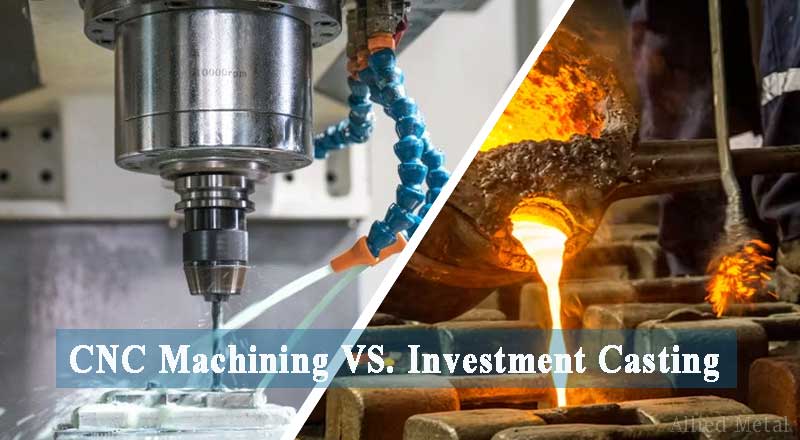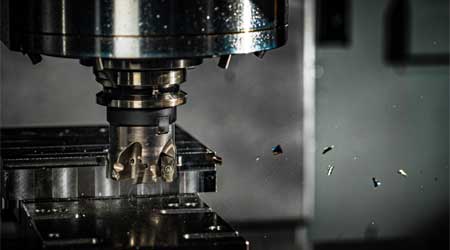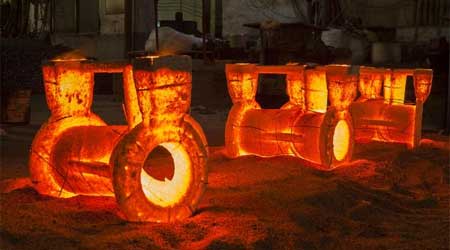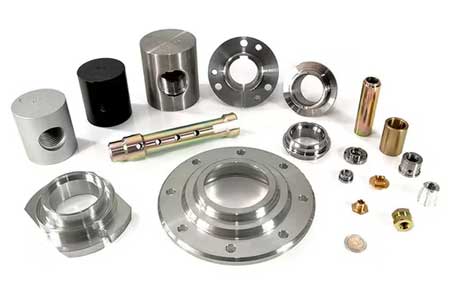CNC Machining vs Investment Casting
- December 2, 2024
- Tony

1. CNC machining overview
1. What is CNC machining?
CNC machining is a technology that uses computer numerical control to guide machine tools in executing preset instructions. It enables precise operations like milling, turning, and drilling, and is widely used in industries such as aerospace, automotive, and medical devices.

2. CNC machining process
The basic process of CNC machining includes the following steps:
- Design: The designer draws a 3D model of the part using CAD software.
- Programming: The design is converted into a CNC program through CAM software to generate machine instructions.
- Machining: The CNC machine automatically performs precision machining according to the instructions.
- Inspection: After machining is completed, a quality check is performed to ensure that the part meets the requirements.
3. Characteristics of CNC machining
High automation
The process follows pre-programmed instructions, allowing the operator to focus on loading, tooling, and monitoring. This reduces labor intensity and boosts productivity.
High precision
With excellent accuracy and repeatability, CNC systems can achieve micron or even nanometer-level precision, ensuring parts are both precise and stable—ideal for complex, high-precision designs.
High efficiency
Multiple operations can be completed in one cycle, reducing setup time and increasing efficiency. Multi-axis capabilities further enhance productivity.
Versatility
CNC technology is compatible with a wide range of materials, including metals, non-metals, and composites, and supports various processes such as CNC turning, CNC milling, CNC drilling, and CNC grinding.
Faster product development
Programs are automatically generated from part drawings, speeding up development. Simulation also helps detect issues early, minimizing waste.
System integration
CNC systems can integrate with CAD, CAM, and other platforms for seamless digital manufacturing, improving automation and production efficiency.
2. Overview of investment casting
1. What is investment casting?
Investment casting is a process in which metal is melted and injected into a mold to form a part. It is commonly used to produce castings with complex shapes and high precision requirements. The process is particularly suitable for mass production and complex structure of the parts.

2. Process
The basic process of investment casting includes:
- Mold making: The desired shape is made by wax or resin mold.
- Mold melting: The mold is heated to the melting point to form a cavity.
- Metal Pouring: The molten metal is injected into the mold and cooled to form the casting.
- Mold dismantling and cleaning: the shell is dismantled and the surface of the casting is cleaned to remove excess.
- Post-processing: Includes grinding, cutting, etc. to ensure that the casting meets specifications.
3. Features
High Precision and Surface Finish
Investment casting produces castings with high precision (CT4-6) and smooth surface finishes (Ra 1.6-3.2μm), far exceeding traditional sand casting (CT10-13), making it ideal for parts with strict accuracy and surface requirements.
Suitable for Complex Shapes
This process excels in creating complex, thin-walled castings that are difficult to achieve with sand casting or machining, such as high-temperature alloy parts like jet engine blades.
Versatile Material Compatibility
Investment casting works with a wide range of alloys, including carbon steel, stainless steel, heat-resistant alloys, and more, to meet the diverse material needs of various industries.
Flexible Production Batches
Whether small or large batch, investment casting is adaptable. Despite its complex process and longer cycle time, production volumes are not limited, making it ideal for custom, high-precision parts.
3. CNC machining and investment casting differences in comparison
Comparison Point | CNC Machining | Investment Casting |
Processing Method | Material is removed through mechanical cutting | Molten metal is poured into a mold to form parts |
Precision & Detail | High precision, ideal for complex shapes and fine details | Suitable for complex shapes, but with lower precision and less fine detail compared to CNC machining |
Application Range | Small batch, high-precision, customized parts (e.g., aerospace, automotive, medical) | Mass production of parts (e.g., engine components, turbine blades) |
Cost & Lead Time | Higher cost, longer production cycle, ideal for small batch, customized production | High mold cost, but lower unit cost for large production volumes, shorter lead time for mass production |
Materials & Versatility | Can process metals, plastics, composites, etc., highly versatile | Primarily used for metals like aluminum, steel, and nickel alloys |
Suitable Parts | Complex, precise small-batch parts | Large, complex-shaped parts, especially for mass production |
4. CNC machining and investment casting advantages complement each other
Although CNC machining and investment casting are different processes, they can complement each other to boost productivity and part quality. Investment casting is well-suited for quickly producing high-volume parts with complex shapes, while CNC machining ensures precise finishing to achieve high accuracy and surface quality.
For example, in the aerospace industry, complex parts are often first created using investment casting, and then CNC machining is applied to refine holes and surfaces, ensuring tight tolerances are met.
This combination increases efficiency, especially in mass production. Investment casting lowers costs, while CNC machining guarantees precision and quality for custom and high-demand parts. Together, they save time and costs while ensuring excellent quality and accuracy.
5. How to choose the right processing method for you?
Choosing the right processing method requires a combination of factors. Here are a few key decision points to help you make your choice:
Complexity of the part shape


If the part shape is complex and requires a high degree of accuracy, CNC machining is a better choice. For parts with complex shapes but less stringent accuracy requirements, investment casting is a more cost-effective option.
Production Volume
For high volume production, investment casting is often more economically advantageous because the cost of the mold can be spread over more parts. For smaller quantities or customized parts, CNC machining offers greater flexibility and precision to meet individual needs.
Material Selection
CNC machining is suitable for a wider range of materials, such as metals, plastics, and composites, providing a wider range of adaptability. Investment casting, on the other hand, is particularly well suited to the production of castings, with better performance especially in the machining of certain alloy materials.
6. Summary
Both CNC machining and investment casting play key roles in modern manufacturing, each with its own set of advantages that make it suitable for different production needs. Understanding their differences and how they can complement each other allows you to make a more informed decision based on the specific requirements of your product.
